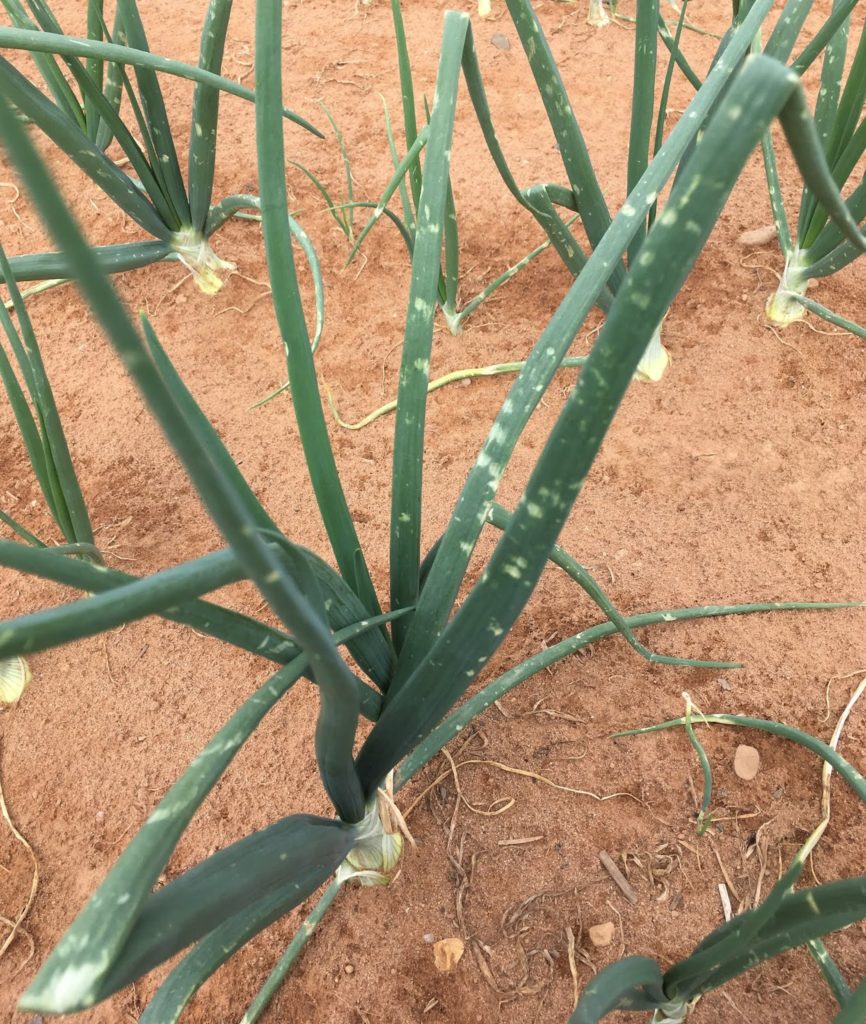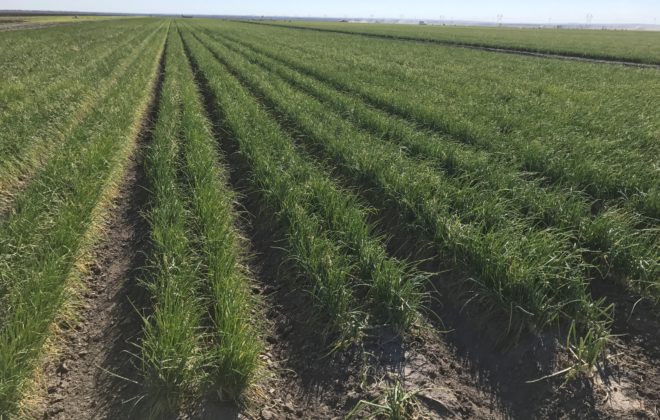Storm Damage to Your Onions
Have you ever experienced bad storm damage in your onion patch?
Often a storm may completely flatten the onion’s tops due to high winds, heavy rain, soil particles, and even hail.
If the foliage is just bent at the base and the bulbs aren’t completely formed, there is still hope. Usually the onions will straighten back up and resume growth. This usually occurs in just a few days after the event. The impact may be smaller bulbs in your crop since the crimp or bend in the leaves will decrease the ability of the plant to transfer all its carbohydrates down to the bulb. Think of it as a garden hose that is crimped. Less water will flow but as the crimp is decreased, more water begins to flow and eventually the bend is gone. This type of storm damage will cause more serious damage in the long run as it makes the plant more susceptible to fungal and bacterial pathogens such as Botrytis leaf blight. We recommend a fungicide immediately following the storm.

If the tops are completely broken off, there is not much you can do. You might as well start harvesting those severely damaged as they usually will not continue to grow without severe disease issues. If the hail is bad enough it can cause damage directly to the bulb which will make them soft in certain places and cause them to rot shortly after being harvested (if they are harvested at all).

Preventing disease in your damaged onions
Spraying broad spectrum fungicides such as Mancozeb or Disease Control immediately following storm damage will help prevent the spread of the disease. Once the leaves have been damaged, the lesions provide an avenue for bacteria to enter the center of the onion. If not treated, this usually results in storage and rotting issues. Sometimes it is not known until after harvest when you go to cut into a bulb.

While we always recommend spraying fungicide as a preventive measure, we especially recommend this after you have experienced bad weather. Most disease issues are not caught until long after the onions are put in storage. Unfortunately, then it is too late because the disease has already done its damage. One of our number one growing tips is use a fungicide on your onion crop. You never know you have a disease issue until it’s far too late.




Will my onions plants survive cut ants? Ants removed the tops down to about 1/2 inch. They are beginning to grow again at this time
Just make sure you use a fungicide as the tops now have an entry point for bacteria.
We don’t recommend it as it creates an avenue for bacteria to enter the center of bulb which will more than likely result in storage problems.